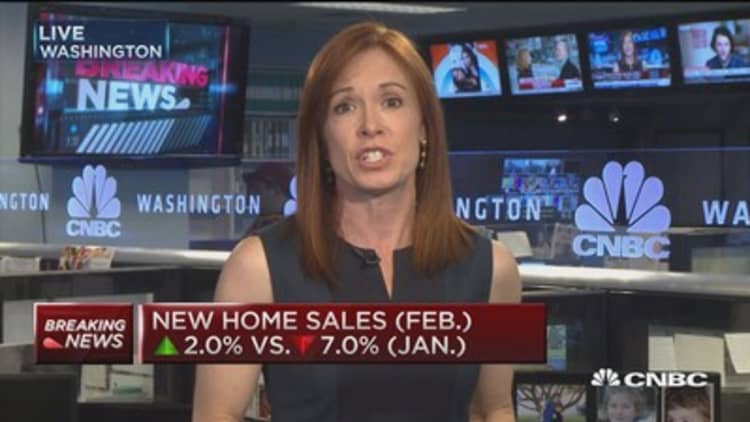
The do-it-yourself home improvement market is running hot again, although demand hasn't entirely recovered from pre-recession levels.
Rising home turnover and price appreciation, along with job and wage growth, are driving demand and sales growth at the nation's two largest DIY retailers. Management at Home Depot and Lowe's recently offered upbeat outlooks for the next few years and each cited some of these macro factors.
"The customer is clearly investing in our space so we're in a good asset class as it relates to housing," Home Depot Chairman and CEO Craig Menear said last month during the company's earnings conference call. However, he also said "special order kitchens, countertops in all manner of millwork still remain below the 2006 peak."
There is some debate whether the current spending cycle may be losing steam due in part to softness showing up in consumer discretionary categories such as home furnishings. Also, the Consumer Confidence Index from the Conference Board fell in February and the proportion of consumers expecting a reduction in incomes rose.
"Some investors have started to sour on the home improvement sector with the view that we may be approaching the 'end of the cycle,' especially in light of softening sales trends in the bigger-ticket categories such as autos and home furnishings," RBC Capital Markets analyst Scot Ciccarelli said in a note to clients this week. "This is not our view. Rather, we believe 'home-related' investment spending today is only reaching levels where the industry has historically 'bottomed out' during prior downturns/recession (at approximately 3.5 percent of total GDP)."
Year-to-date, shares of Home Depot and Lowe's are slightly lower through Tuesday's close. By comparison, other big-box retailers such as Wal-Mart Stores and Target are each up more than 10 percent in the same period and handily beating the .
After several quarters of flagging growth in 2015, one forecast suggests home improvement spending will accelerate this year. According to Harvard University's Leading Indicator of Remodeling Activity, spending will rise from 4.3 percent in the first quarter to 7.6 percent in the third quarter. By then, the LIRA forecast is for annual spending in nominal terms to exceed levels from the previous peak set in 2006.
"Coming out of the Great Recession, we had small tickets do better and large tickets not do as well" at the major DIY retailers, said Raymond James analyst Budd Bugatch. "Now you're seeing people migrate to larger tickets that means you're getting more of the professional activity inside stores as well as the 'do-it-for-me' customer is back. That's likely to continue for a while."
Both Lowe's and Home Depot have ramped up their residential home services, including offering bathroom and kitchen remodeling assistance as well as renovation help on such things as replacement windows. The big-box retailers both have slightly different approaches to the home services, although both tend to use third-party contractors for the actual installation work.
"The 'do-it-for-me' customer really needs a partner and needs somebody who will not only give them the product but is also going to be able to provide the service and planning assistance that they need to get a large project done," said Lowe's chief Omni-Channel officer Brent Kirby, whose responsibilities include customer programs such as the one dedicated to home interiors and exteriors.
The average U.S. home has appreciated in value nearly 8 percent in the past year and 24 percent in five years, according to RealtyTrac. The increased appreciation in the five-year period is much greater in major markets such as Atlanta, San Francisco, Phoenix, Las Vegas and Los Angeles, among others.
"As prices kind of stay in the low to middle single-digit increases year over year, then consumers feel more confident in investing in their homes and are more likely to spend," said Telsey Advisory Group analyst Joseph Feldman, who forecasts home price appreciation in the large markets will continue to outpace that of the smaller markets "for the foreseeable future."
Meanwhile, there have been reports for some time about how millennials prefer renting or are living with their folks and delaying buying their first home. A report last month from Bank of America Merrill Lynch suggests attitudes might be starting to shift.
BofA surveyed more than 1,000 men and women aged 25-34 years old and found 24 percent were "likely or extremely likely to buy a home in the next two years." The survey also found financing and saving for a down payment remained an issue.
Most of these young adults "were willing to take on DIY projects, unless it was beyond their skill set," BofAML said. Somewhat surprisingly, smart home features were largely an afterthought for most of the millennials who were surveyed.






